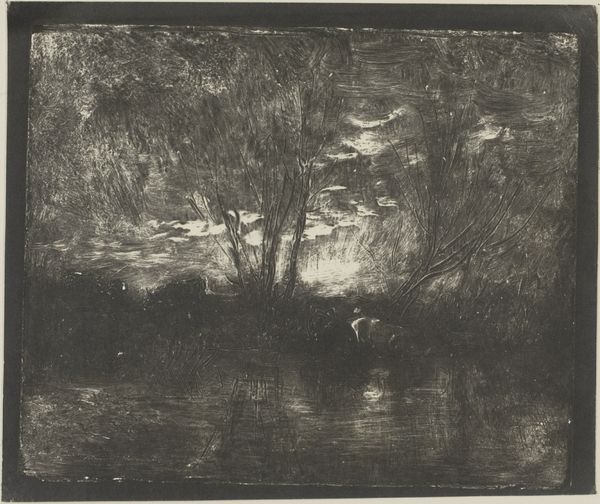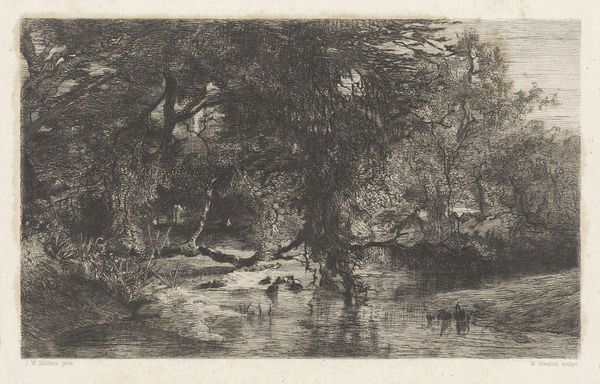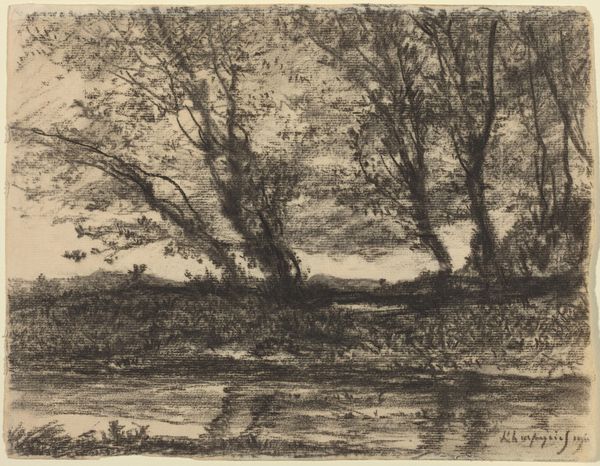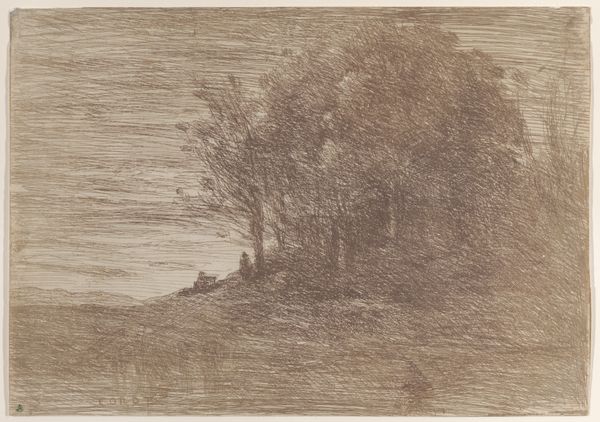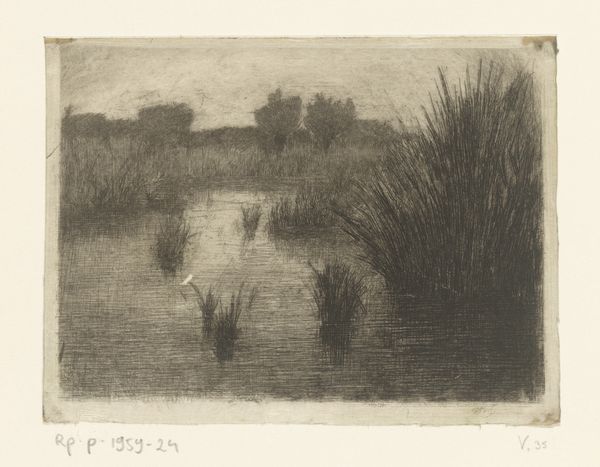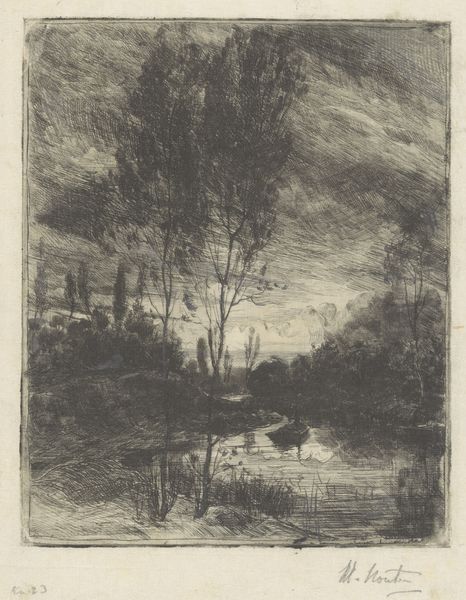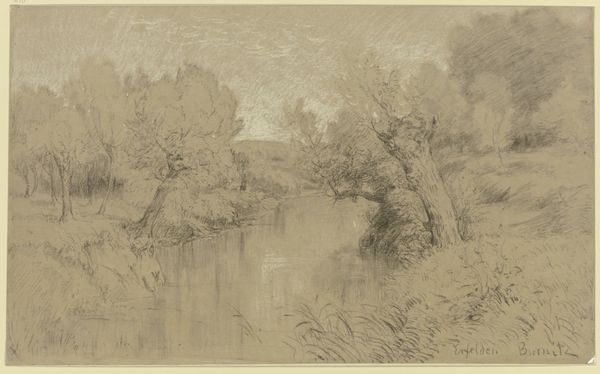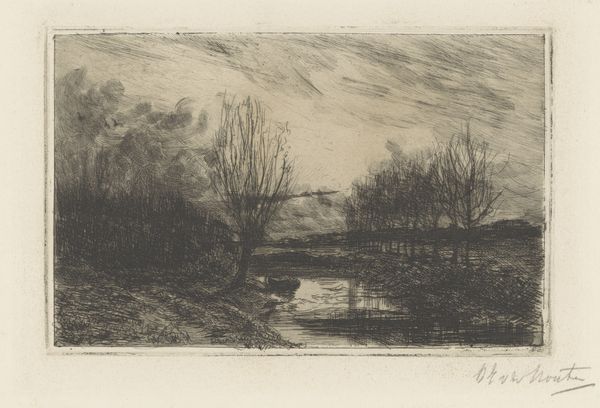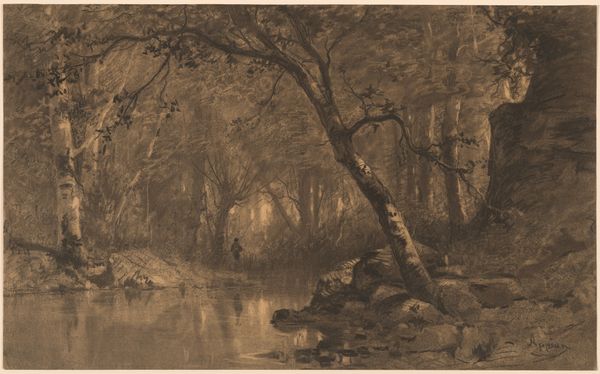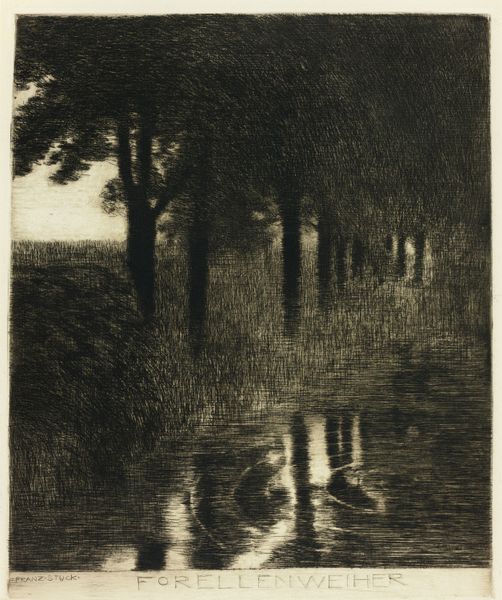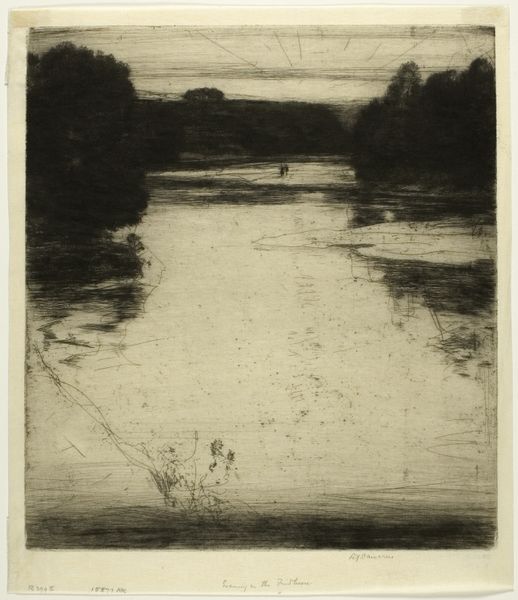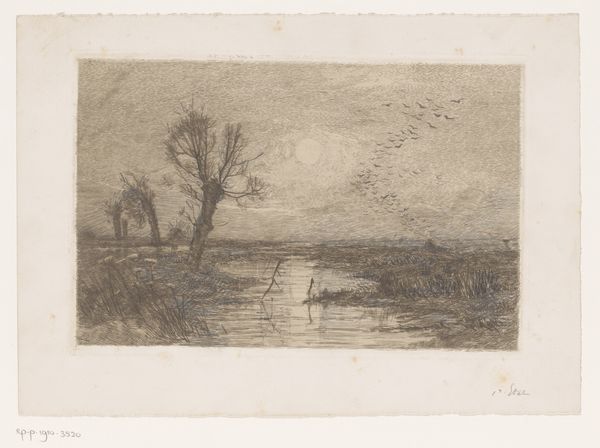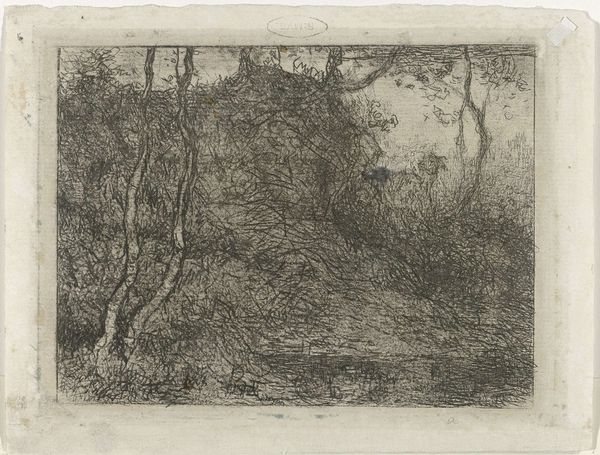
drawing, print, paper
#
organic
#
drawing
#
organic
# print
#
impressionism
#
organic shape
#
landscape
#
paper
#
nature
Dimensions: 148 × 185 mm
Copyright: Public Domain
Curator: Charles-François Daubigny's print, "Cows at the Watering Place," created in 1862, offers a serene pastoral scene rendered with a distinctive atmospheric quality. Editor: It evokes a certain stillness, doesn't it? Almost melancholic. The limited palette seems to amplify that mood, shrouding the scene in a contemplative haze. Curator: Precisely. Daubigny’s landscapes often function as reflections of inner emotional states. Cows, universally symbolic of nourishment and peace, are placed at the watering place as if enacting a ritual. Consider the historical context: in 1862, industrialization threatened traditional rural life, such images become almost nostalgic yearnings. Editor: It reads like a critique of modernity, doesn’t it? A silent protest against the erasure of rural existence. Even the medium—the print itself—feels somewhat democratic, enabling wider distribution of this visual commentary. Who has access to representations of "nature"? And who is systematically alienated from it? Curator: An interesting take! The trees themselves might carry a symbolic weight, their bare branches hinting at dormancy or potential, mirrored in the subtle ripples on the water's surface, symbols of transformation. Remember, water appears frequently in our collective cultural consciousness as something pure, receptive, adaptable, while trees can indicate resilience and family connections. Editor: But there's also something undeniably classist here, isn't there? The idealization of peasant life often romanticizes the hardship inherent in agricultural labor. Where are the humans, the farmers themselves, toiling in this very real ecosystem? It's a narrative shaped, primarily, by the urban elites for their own consumption. Curator: A crucial point! Though it doesn't remove the deeper connection to the natural rhythms that Daubigny portrays—that enduring search for harmony through familiar images. It becomes then not merely about "cows at water" but about us at water. Editor: That's a wonderful reframing. Considering the inherent contradictions enmeshed in this image leaves me with a renewed appreciation for its place as both an artistic achievement and a culturally contingent artefact. Curator: And as a powerful touchstone for our relationship with nature's symbols and our personal interpretations across time.
Comments
No comments
Be the first to comment and join the conversation on the ultimate creative platform.
